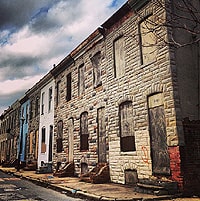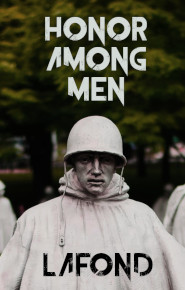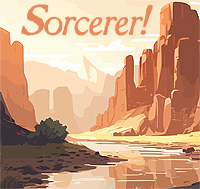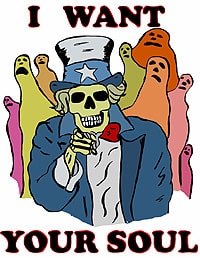Formerly published as, ‘Eyes Burning in the Gloom,’ revised with additions.
Originally published in January 1934 in Weird Tales, reading from the 2003 Del Ray, collection The Coming of Conan the Cimmerian, illustrated by Mark Shultz
As usual Mark does an excellent job of illuminating the text with his fluid ink work. The scene in which Conan battles Thak is not quite up to the Mark Frazetta set, but is excellent in its own right. I must say that Mark was laudably up to the task of illustrating a dozen women being carried off by Conan in various poses throughout this volume without letting it get redundant, and Rogues in the House does not disappoint on that count.
As with all of the Conan tales, being thematically complex, it is difficult to place Rogues in the House in terms of a dominant theme: with gulfs, civilization, barbarism and race all strong in this tale. However, Howard's strongest point in the story is on race.
The young nobleman Murilo has just been handed a death sentence by the Red Priest, Nabonidus, for whom “People, chancellor and king moved puppet-like on the strings he worked.” To aid him in assassinating the evil priest, the young nobleman reaches out to a jailed barbarian, Conan. Conan was betrayed by a priest who had fenced the goods Conan stole for him and then turned him in to the authorities as thanks. After Conan’s partner was executed, he took revenge on the priest by cutting his head off in his own temple and was then betrayed again to the authorities by his girlfriend. The scene in which a drunken Conan successfully fights his way out of an arrest attempt and then knocks himself unconscious by banging his own head against a wall, the reader does not suspect that this person will one day be the king of a nation.
Unlike the mainstream fairytale-based Tolkien ideal of wizardry, wherein vast intelligence and deep wisdom and ages old tradition–sometimes warped under its own weight—provide the magical element, Howard’s magic workers are all evil sorcerers who warp the perception of men and use rare technologies and evoke ancient evils [metaphoric hate and predatory instinct, it often seems] in service to their vile aims. They are the power behind the throne. They are the bankers that ruled the U.S. President in Howard’s day, and rule him still in our day. Nabonidus is one of Howard’s best sorcerers for he is sympathetically portrayed and is permitted to speak for himself more than others speak of him. He is still, though, a sorcerer; Howard’s antediluvian international banker.
Murilo knows he will be dead by the morrow and reaches for one slim hope. There is a savage barbarian languishing in jail for the crime of murdering a priest for snitching on him. He was betrayed by his ‘punk’ [the whore he lived with]. A squad of guardsmen were only able to capture him because he was so drunk that he ran head first into a doorframe!
Conan the drunk, criminal, whoring, murdering, asshole, barbarian is Murilo’s only hope! He makes a deal with the prisoner to free him and spirit him from the city if only he slays the sorcerer this night. What follows is a criminal adventure, aptly named Rogues in the House, with a cast of murderers, fools and fiends.
During the course of this adventure, seen largely through the eyes of Murilo, Conan is by turns heroic, ruthless, trustworthy and murderous. Conan is a criminal with a code, like Omar Little on The Wire. The actual adventure inside the house is too good to ruin. Suffice it to say that many horrors which are really those of nature and science await the intruders who would challenge the power behind the throne. In the entire tale not a single ‘good guy’ emerges.
What the Conan character symbolizes in Rouges in the House is the sour hope that sits within every degenerate society; the thorny alienated persona that in times of crises—personal or tribal—may offer hope where the traditional solutions to men's cares, having been malformed and weakened on the collective path, are doomed to failure. Conan the Criminal is Howard's reminder that when men of false power find themselves in peril in a post-tribal setting, they tend—as if by instinct—to reach down to the outcasts within, to the hunter who mattered in the tribal past. Also, in the final scene, it is the crude barbarian who steps forward in the name of our shared humanity. Rogues in the House stands as one of Howard's best allegorical tales.
Howard’s fictional vehicle for exposing the truth behind the veils of government, politics and resource exploitation is best grasped through the eyes of a believable action figure; a composite criminal, a fumblingly defiant ‘outsider within’ whose fury, in the end, sees him though terrible trials. To get a taste for the non-sanitized Conan, I quote from the scene where he approached the apartment of the girl who betrayed him. He has spotted her new lover coming down the stairs [sounds like urban America again]. This is from the point-of-view of the new boyfriend:
“A vague bulk crouched in the darkness before him, a pair of eyes blazed like the eyes of a hunting beast. A beast-like snarl was the last thing he heard in life, as the monster lurched against him, and a keen blade ripped through his belly. He gave one gasping cry, and slumped down limply in the stairway.
“The barbarian loomed above him for an instant, ghoul-like, his eyes burning in the gloom.”
Is that monster as hero or hero as monster? I highly recommend you read the prose version of this Conan tale. And remember, the star of this short story is named Thak. In his unpublished novel, Almuric, Thak is the god of the apemen of that planet. As a god, this figure has the same characteristics as Conan’s god, Crom, while Conan has nothing but disdain for the arch villain, Nabonidus, even wondering out loud if his blood will be as black as his heart. Nabonidus proves this by what the reader will see as his predictable verbal deception and utter lack of humanity, allied only with himself to the end. Ultimately, the antagonist is destroyed by the weakness in his character, his own ego and arrogance, which are the source of his undoing as he pauses to gloat over his own cleverness.
After slaying the apeman who was billed as his monstrous antagonist in the artwork in this and other volumes featuring the story, and described by his master, Nabonidus, as pre-human [and possessing a “vague and terrible pathos,” or the human condition in which men try to fill an existential void as if running a race which never ends], Conan says of Thak, “I have slain a man tonight, not a beast. I will count him among the chiefs whose souls I’ve sent into the dark, and my women will sing of him.”
One of the most common themes in Howard’s fiction is a broad view of humanity which encompasses types of primates that few people today would consider human. I think Howard strikes that note best here.











